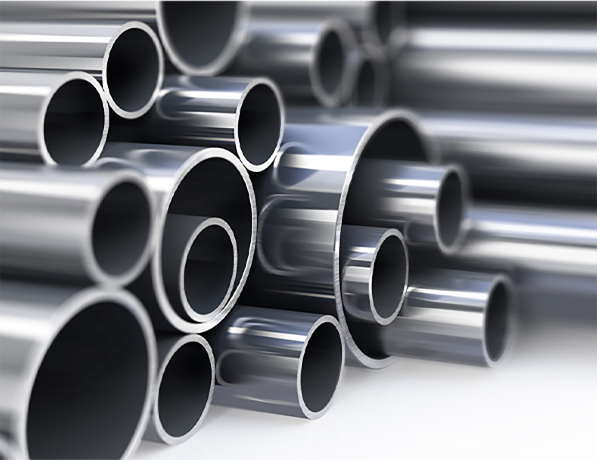automotive hydraulic lift parts
Dec . 05, 2024 15:54
Understanding Automotive Hydraulic Lift Parts The Backbone of Modern Vehicle Service
In the fast-paced world of automotive service and repair, efficiency and safety are paramount. One of the most critical tools in any automotive workshop is the hydraulic lift. This equipment not only facilitates ease of access to various components of a vehicle but also ensures that technicians can work with precision and safety. Understanding the parts of an automotive hydraulic lift is essential for anyone involved in vehicle maintenance or repair. This article dives into the key components of hydraulic lifts, their functions, and why they are indispensable in modern automotive service.
The Basics of Hydraulic Lifts
Hydraulic lifts operate on the principle of Pascal's law, which states that when pressure is applied to a confined fluid, it transmits that pressure equally in all directions. This principle is what allows a hydraulic lift to lift heavy vehicles effortlessly. At the core of this mechanism is hydraulic fluid, a specially formulated liquid that facilitates movement within the system.
Key Components of Automotive Hydraulic Lifts
1. Hydraulic Cylinder The hydraulic cylinder is the powerhouse of the lift. It consists of a cylindrical chamber where hydraulic fluid is stored. When the fluid is pumped into this cylinder, it generates the pressure needed to lift the vehicle. The size and design of the cylinder determine the lift's capacity and the height it can reach.
2. Piston Inside the hydraulic cylinder is a piston, which moves in response to the pressure applied by the hydraulic fluid. As the piston ascends, it pushes the lift platform upwards, allowing the vehicle to be elevated for repairs.
3. Pump The pump is responsible for moving the hydraulic fluid into the cylinder. There are several types of pumps used in hydraulic lifts, including gear pumps, piston pumps, and vane pumps. The choice of pump can impact the lift's speed and efficiency.
4. Lift Platform The lift platform is the surface where the vehicle is placed. It can come in various shapes and sizes, depending on the type of lift (two-post, four-post, scissor, etc.). The design of the platform must be sturdy and stable to ensure the safety of both the vehicle and the technician.
automotive hydraulic lift parts
5. Control Valve The control valve regulates the flow of hydraulic fluid in and out of the cylinder. This component allows the technician to lower or raise the lift with precision. Advanced lifts may have electronic controls for easier operation.
6. Safety Mechanisms Safety is a critical concern when working with hydraulic lifts. Features such as safety locks, overload sensors, and emergency lowering systems are essential to prevent accidents and ensure the safe operation of the lift.
Importance of Regular Maintenance
Like any mechanical equipment, automotive hydraulic lifts require regular maintenance to ensure they function correctly and safely. Technicians should routinely check hydraulic fluid levels, inspect hoses and seals for leaks, and ensure that the safety mechanisms are working as intended. Neglecting maintenance can lead to mechanical failures, which can be dangerous.
The Future of Hydraulic Lifts
As technology progresses, hydraulic lift designs continue to evolve. Some modern lifts incorporate advanced materials and smart technology, allowing for faster operation and enhanced safety features. Additionally, with the rise in electric and hybrid vehicles, lift designs are adapting to accommodate these different weights and configurations.
Conclusion
Automotive hydraulic lift parts are vital for the efficient operation of any service garage. Understanding these components and their functions not only enhances the skills of automotive technicians but also promotes a safer working environment. By taking the time to learn about hydraulic lifts and investing in their maintenance, workshops can ensure they are prepared for the demands of modern vehicle service and repair. In a world where time is money, having a reliable hydraulic lift can make all the difference in delivering quality service to customers.
 Afrikaans
Afrikaans  Albanian
Albanian  Amharic
Amharic  Arabic
Arabic  Armenian
Armenian  Azerbaijani
Azerbaijani  Basque
Basque  Belarusian
Belarusian  Bengali
Bengali  Bosnian
Bosnian  Bulgarian
Bulgarian  Catalan
Catalan  Cebuano
Cebuano  Corsican
Corsican  Croatian
Croatian  Czech
Czech  Danish
Danish  Dutch
Dutch  English
English  Esperanto
Esperanto  Estonian
Estonian  Finnish
Finnish  French
French  Frisian
Frisian  Galician
Galician  Georgian
Georgian  German
German  Greek
Greek  Gujarati
Gujarati  Haitian Creole
Haitian Creole  hausa
hausa  hawaiian
hawaiian  Hebrew
Hebrew  Hindi
Hindi  Miao
Miao  Hungarian
Hungarian  Icelandic
Icelandic  igbo
igbo  Indonesian
Indonesian  irish
irish  Italian
Italian  Japanese
Japanese  Javanese
Javanese  Kannada
Kannada  kazakh
kazakh  Khmer
Khmer  Rwandese
Rwandese  Korean
Korean  Kurdish
Kurdish  Kyrgyz
Kyrgyz  Lao
Lao  Latin
Latin  Latvian
Latvian  Lithuanian
Lithuanian  Luxembourgish
Luxembourgish  Macedonian
Macedonian  Malgashi
Malgashi  Malay
Malay  Malayalam
Malayalam  Maltese
Maltese  Maori
Maori  Marathi
Marathi  Mongolian
Mongolian  Myanmar
Myanmar  Nepali
Nepali  Norwegian
Norwegian  Norwegian
Norwegian  Occitan
Occitan  Pashto
Pashto  Persian
Persian  Polish
Polish  Portuguese
Portuguese  Punjabi
Punjabi  Romanian
Romanian  Samoan
Samoan  Scottish Gaelic
Scottish Gaelic  Serbian
Serbian  Sesotho
Sesotho  Shona
Shona  Sindhi
Sindhi  Sinhala
Sinhala  Slovak
Slovak  Slovenian
Slovenian  Somali
Somali  Spanish
Spanish  Sundanese
Sundanese  Swahili
Swahili  Swedish
Swedish  Tagalog
Tagalog  Tajik
Tajik  Tamil
Tamil  Tatar
Tatar  Telugu
Telugu  Thai
Thai  Turkish
Turkish  Turkmen
Turkmen  Ukrainian
Ukrainian  Urdu
Urdu  Uighur
Uighur  Uzbek
Uzbek  Vietnamese
Vietnamese  Welsh
Welsh  Bantu
Bantu  Yiddish
Yiddish  Yoruba
Yoruba  Zulu
Zulu 












